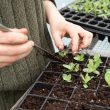Gardening is a rewarding hobby that can provide you with fresh produce, beautiful flowers, and a sense of accomplishment. However, it can also be frustrating when your plants don’t produce as much as you hoped. Fortunately, there are several strategies you can use to increase your garden’s productivity and maximize your yield. In this article, we’ll explore some of the most effective techniques for boosting your garden’s output.
1. Choose the Right Plants
One of the most important factors in maximizing your garden’s yield is choosing the right plants. Some plants are simply more productive than others, so it’s important to do your research and select varieties that are known for their high yields. Additionally, you should consider the climate and soil conditions in your area and choose plants that are well-suited to those conditions.
2. Start with Healthy Soil
Healthy soil is essential for a productive garden. Before you plant anything, take the time to prepare your soil by adding compost, manure, or other organic matter. This will help to improve the soil’s structure, fertility, and water-holding capacity, which will in turn promote healthy plant growth and higher yields.
3. Provide Adequate Water
Water is another critical factor in maximizing your garden’s productivity. Most plants require consistent moisture to thrive, so it’s important to provide them with adequate water throughout the growing season. This may mean watering your garden regularly, using drip irrigation, or installing a rainwater harvesting system.
4. Use Fertilizer Wisely
Fertilizer can be a powerful tool for boosting your garden’s productivity, but it’s important to use it wisely. Too much fertilizer can actually harm your plants, so it’s important to follow the manufacturer’s instructions and apply it sparingly. Additionally, you should choose a fertilizer that is appropriate for the plants you’re growing and the soil conditions in your garden.
5. Practice Crop Rotation
Crop rotation is a technique that involves planting different crops in different areas of your garden each year. This can help to prevent soil-borne diseases and pests from building up in the soil, which can in turn improve plant health and productivity. Additionally, rotating crops can help to balance soil nutrients and promote healthy soil structure.
6. Control Pests and Diseases
Pests and diseases can wreak havoc on your garden and significantly reduce your yield. To minimize the impact of these problems, it’s important to take proactive steps to control them. This may include using natural pest control methods, such as companion planting and beneficial insects, or using organic pesticides and fungicides when necessary.
7. Harvest Regularly
Finally, it’s important to harvest your crops regularly to promote continued growth and productivity. Many plants will continue to produce as long as you keep harvesting, so don’t be afraid to pick your fruits and vegetables as soon as they’re ripe. Additionally, harvesting regularly can help to prevent over-ripening and spoilage, which can reduce your overall yield.
In conclusion, maximizing your garden’s yield requires a combination of careful planning, proper soil preparation, and proactive pest and disease control. By following these strategies and choosing the right plants for your garden, you can enjoy a bountiful harvest and a more productive garden.











